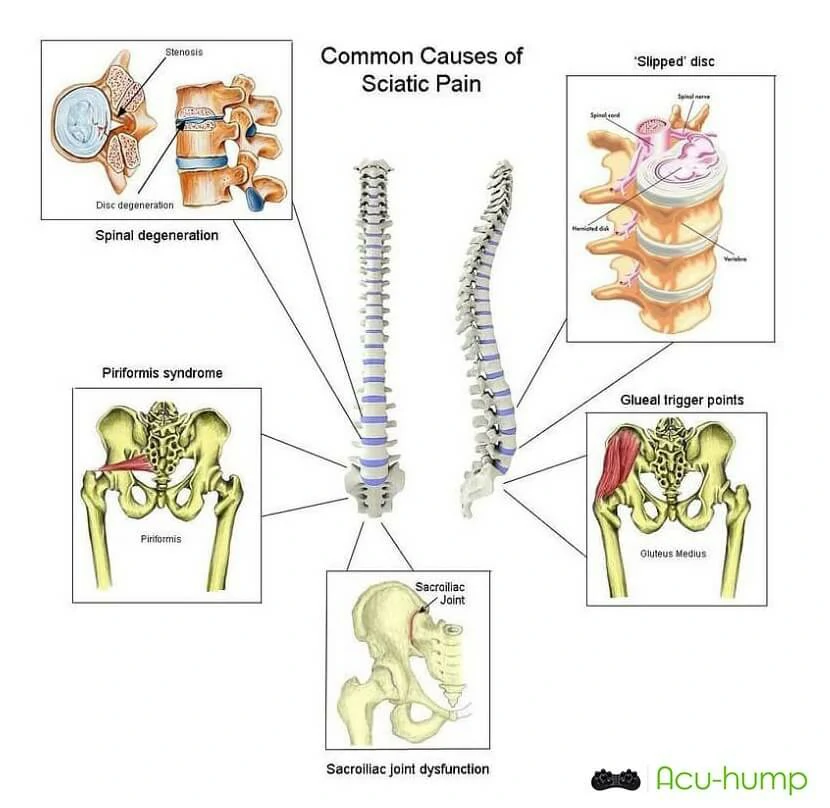Sciatica is a condition characterized by severe leg pain and discomfort caused by compression or irritation of the sciatic nerve. Don’t let debilitating sciatica pain hold you back. Discover effective strategies to get rid of sciatica and regain control of your daily life.

The Causes of Sciatica
Sciatica can have several underlying causes, including herniated discs, spinal stenosis, or piriformis syndrome. It is crucial to identify the specific cause, as different treatments may be more effective for each. Understanding the root cause provides a foundation for targeted treatment.
Herniated discs
A herniated disc occurs when the soft, gel-like center of a spinal disc protrudes through a tear in the outer disc wall. This can irritate or compress the adjacent nerves, including the sciatic nerve, leading to sciatica.
Spinal stenosis
Spinal stenosis is a condition where the spinal canal narrows, putting pressure on the nerves. When the sciatic nerve is affected, it can result in sciatica symptoms. Spinal stenosis often occurs due to age-related degeneration of the spine or the formation of bone spurs.
Piriformis syndrome
The piriformis muscle, located in the buttock region, can become tight or spasmodic. This can cause compression or irritation of the sciatic nerve, leading to sciatica symptoms. Piriformis syndrome can be caused by muscle imbalances, trauma to the buttocks, or persistent overuse of the muscle.
Degenerative disc disease
Degenerative changes in the spine, such as the loss of disc height and flexibility, can put excess pressure on the nerves, including the sciatic nerve. This can result in sciatica symptoms, including leg pain, numbness, or tingling.
Spondylolisthesis
This condition occurs when one vertebra slips forward over another, causing instability and nerve compression. When the slipped vertebra affects the sciatic nerve, it can lead to sciatica symptoms.
Lumbar spinal tumors
Tumors that develop in or around the spinal canal can compress the sciatic nerve and cause sciatica. These tumors may be benign or malignant.
Trauma or injury
Accidents or injuries that impact the lower back, such as falls, car accidents, or sports-related mishaps, can result in sciatica. The force or impact can cause nerve compression or damage, leading to leg pain and associated symptoms.
Seeking Medical Advice
For individuals experiencing persistent leg pain, seeking medical advice is crucial. A healthcare professional can conduct a comprehensive examination and order diagnostic tests such as MRI or X-rays to determine the exact cause of sciatica. Achieving an accurate diagnosis is crucial for developing an effective treatment plan to get rid of your sciatica pain.
Non-Surgical Treatments
Non-surgical treatments are commonly recommended for leg pain caused by sciatica. These approaches focus on alleviating pain and reducing inflammation.
1. Pain medication, both over-the-counter and prescription, can provide temporary relief by reducing pain and inflammation.
2. Physical therapy is a vital component of treatment, aiming to strengthen the affected area and improve flexibility. Specific exercises, such as pelvic tilts and hamstring stretches, can help alleviate the leg pain associated with sciatica.
3. Hot and cold therapy, utilizing hot or cold packs, can help reduce inflammation and provide temporary relief.
Don’t let sciatica hold you back – take the necessary steps to get rid of it and reclaim your life.
Lifestyle Modifications
Implementing certain lifestyle modifications can significantly contribute to alleviating leg pain caused by sciatica.
1. Maintaining good posture is essential. Proper posture helps reduce pressure on the sciatic nerve and prevents further irritation. When sitting, ensure that both feet are flat on the floor and avoid crossing the legs.
2. Regular exercise, focusing on low-impact activities such as walking or swimming, can strengthen the muscles supporting the spine and improve overall flexibility. These exercises promote better spinal alignment, relieving pressure on the sciatic nerve.
3. Maintaining a healthy weight is crucial in reducing stress on the spine. Extra weight can exacerbate sciatica symptoms, so managing weight through a balanced diet and regular exercise can offer significant relief.

Alternative Therapies
In conjunction with traditional treatments, alternative therapies may provide additional relief for sciatica-induced leg pain.
1. Acupuncture is a practice that involves inserting thin needles into specific points of the body. This technique aims to stimulate the body’s natural pain-relieving mechanisms and promote healing.
2. Chiropractic care focuses on realigning the spine through spinal adjustments. These adjustments can alleviate pressure on the sciatic nerve and offer relief from leg pain caused by sciatica.
3. Acu-hump sciatica massager is a trigger point massage tool designed to relieve sciatica by applying targeted pressure to specific trigger points along the affected area. This alternative therapy offers a convenient and effective means of reducing leg pain.

Acu-hump®
Release Butt & Lower Back
Surgical Options
In severe cases where non-surgical treatments fail to provide relief, surgical intervention may be considered. However, surgery is typically reserved as a last resort and recommended only when conservative approaches have been exhausted.
Leg pain caused by sciatica can have a significant impact on an individual’s quality of life. Seeking medical advice and understanding the underlying cause are crucial steps toward effective treatment. By adopting non-surgical treatments, making lifestyle modifications, and exploring alternative therapies, individuals can find relief from sciatica-induced leg pain and regain their mobility and well-being. It is always important to consult with healthcare professionals to ensure an accurate diagnosis and an individualized treatment plan.
